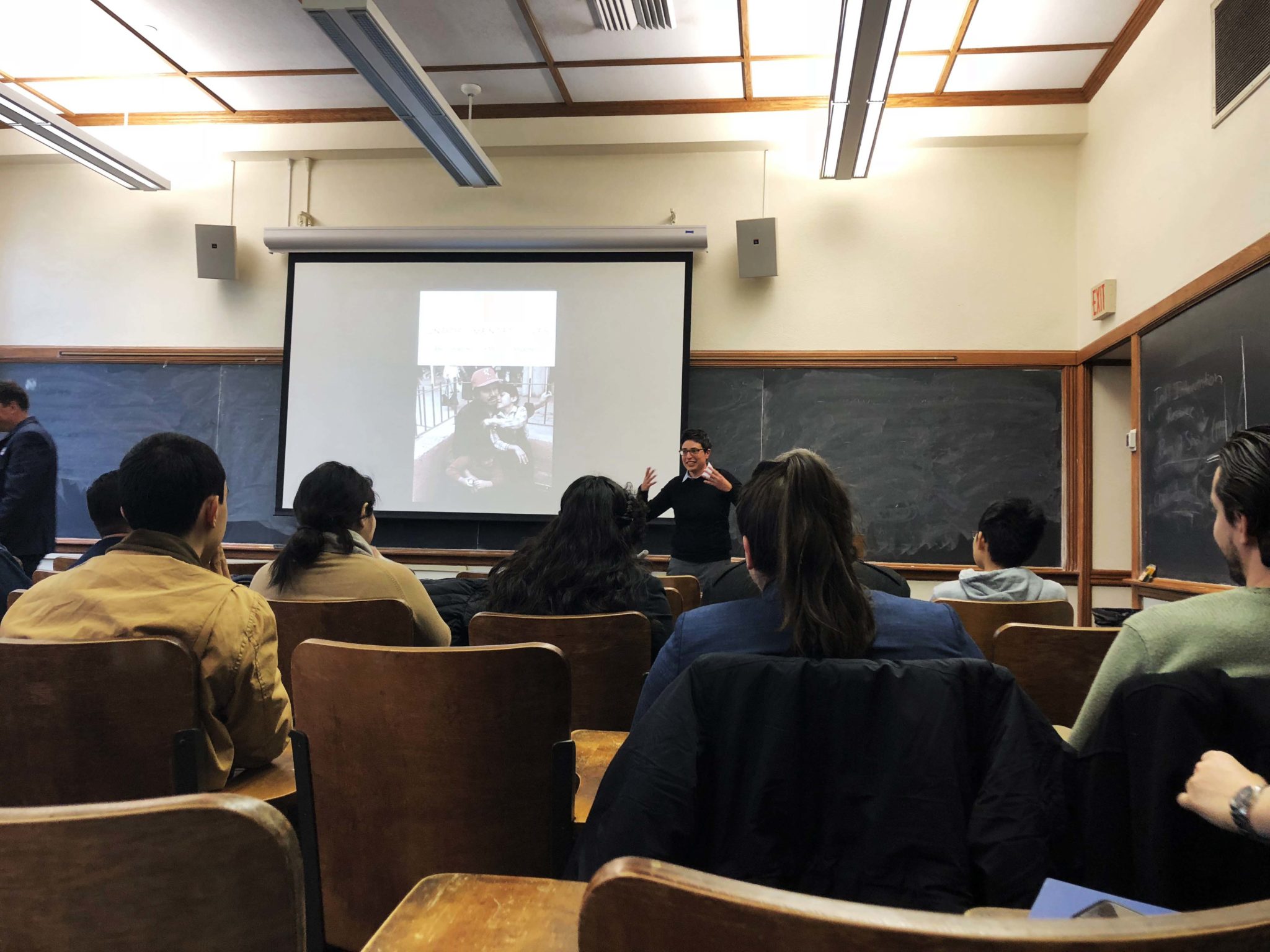
To a crowd of 40 people on Thursday, Ana Raquel Minian GRD ’12 discussed her new book, “Undocumented Lives: the Story of Mexican Migration,” and the history of dialogue surrounding immigration issues at a lecture in William L. Harkness Hall.
As immigration policy continues to dominate the national spotlight, Minian’s new book highlights the connections between immigration policies in the the 1980s and the rhetoric used to describe migrants today. What began as a dissertation for her Ph.D. at Yale grew into a full length book based on 200 oral history interviews. She told the crowd in WLH that her book details the experiences of late 20th-century Mexican migrants who had suffered from both American and Mexican economic policies.
Immigration between Mexico and the United States has drastically changed over time, she said. From 1942 to 1964, legal migration of workers from Mexico to the U.S. was possible through the Bracero Program, which allowed workers to travel back and forth between the two countries. However in 1965, Mexican workers were no longer allowed to come to the U.S. legally.
In the mid-1980s, stricter immigration laws, particularly the creation of the Immigration Reform and Control Act, prompted many immigrants to stay in the U.S., for fear that they would not be able to come back if they returned to Mexico. The act, which was enacted in 1986, prohibited employers from hiring undocumented immigrants and offered legal status to many undocumented immigrants already living in the U.S. During this time, the U.S. was referred to as “jaula de oro,” the cage of gold, Minian said.
“I think it was conditions then that have come to shape the way that migration exists now,” Minian said. “If the Immigration Reform and Control Act had not happened, children would have stayed primarily in Mexico, and now, one of the biggest fights that we have is around dreamers, who would’ve continued to grow in Mexico had IRCA not happened.”
Minian’s book describes the lives of workers who belonged “ni aquí, ni allá,” neither here nor there. In Mexico, the government saw emigration as a solution to the rise in unemployment and inflation. Meanwhile, minorities in the U.S. were accused of draining the welfare system, Minian said. She noted that even other migrants blamed Mexican-Americans for abusing welfare and giving the migrants a bad reputation, which created a sense of alienation among minorities for Mexican migrants and Mexican-Americans.
Minian said she believes using the terms “criminals” and “rapists” to describe migrants stem from these false ideas of migrants disseminated in the 1980s.
Minian’s book also noted that neither the Mexican nor the U.S. government gave aid to poor migrants traveling between the countries. Migrants instead improved living conditions for themselves through activism, which included the creation of La Casa del Mexicano, a group that worked to improve conditions for migrants in the U.S., she told the crowd.
Minian also highlighted the gender dynamics behind the mass migration, explaining that women often stayed in Mexico while men came to the U.S. This physical separation between the couple often caused men to fear their wives would cheat. As a result, they prohibited their wives from leaving the house. This narrative is different from that of migrants today, where the separation is caused by deportation, Minian said.
“In the common rhetoric, people who defend migrants portray them as victims, and people who oppose them portray them as criminals,” she said. “What I try to show is that migrants in their full humanity are complex human beings who fall in love, were possessive of their wives, who are trying to succeed and migrate and how as complex human beings still deserve rights and a place of belonging.”
Attendees interviewed by the News said they enjoyed Minian’s new take on immigration dialogue. Stephen Pitti, head of Ezra Stiles College, said Minian’s book helps us understand the histories that connect the U.S. and Mexico and how Mexican migrants have shaped those histories over time.
“I think Professor Minian shows convincingly that it was the period 1965 to 1986 that really fundamentally shaped the modern migration system as we know it between Mexico and the [U.S.],” Pitti said.
Esther Reyes ’21 also appreciated Minian’s new perspective.
“Ana’s own position as someone who is Latin American and has a personal investment in this topic makes it more interesting … to see her talking about this important thing,” she said.
Kelly Wei | kelly.wei@yale.edu







